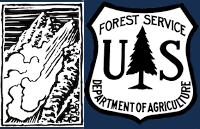Photos
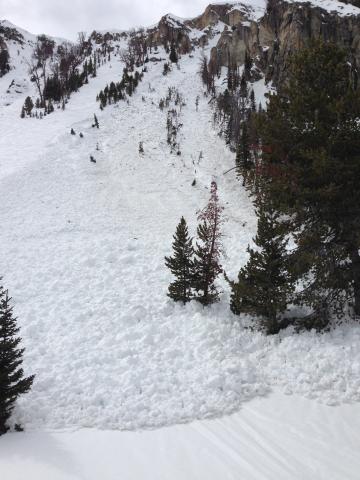
|
Northern Madison, 2013-04-05 This slope climaxed yesterday (Thursday) at 3 pm. It was a wet avalanche that started as a point release and stepped down 3’ deep, and went 600’ vertical. It snapped trees along the way. Photo: T. Leonard |
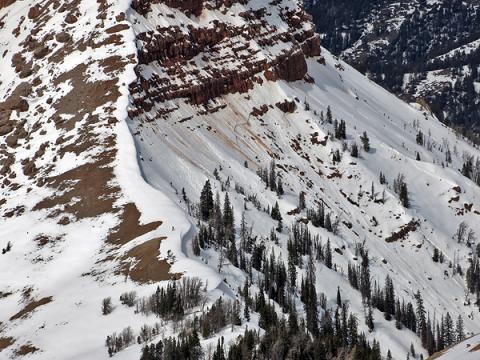
|
Northern Madison, 2013-04-05 A recent wet slab avalanche on a southeast facing slope of the Helmet next to Sphinx Mountain. Photo: B Fredlund. |
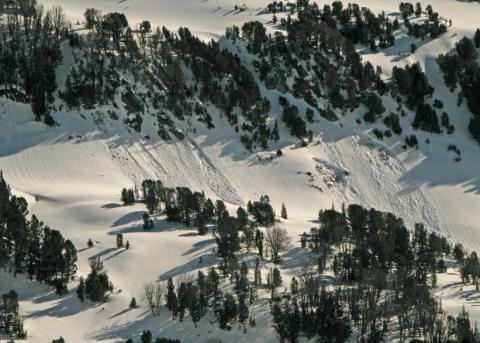
|
Northern Madison, 2013-04-03 These slides occurred in Beehive Basin near Big Sky on Monday (4/1) and Tuesday (4/2). Other similar slides were observed. Photo: C. Corey |
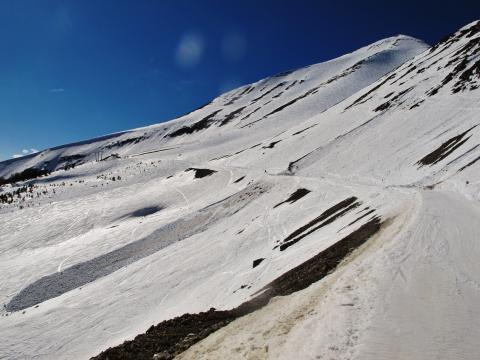
|
Northern Madison, 2013-04-03 This slide was triggerd by starting a very small point release that quickly gained volume and speed. Photo: Big Sky Ski Patrol |
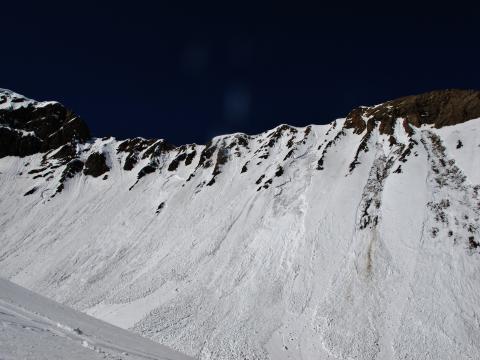
|
Northern Madison, 2013-04-03 These wet loose and wet slab avalanches occurred on Monday (4/1) and Tuesday (4/2) in closed areas at Big Sky. These occurred on south facing slopes at 10K feet. Photo: Big Sky Ski Patrol |
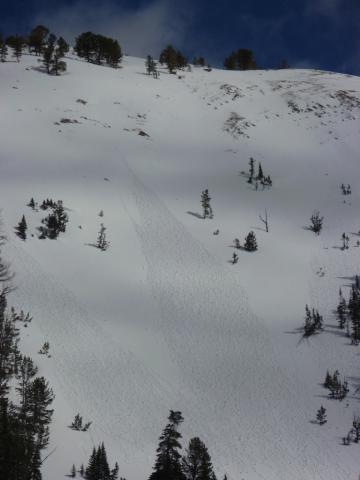
|
Northern Madison, 2013-03-30 Warming temperatures and direct sun are causing point releases on steep slopes. These signs of instability are direct clues the snowpack is becoming unstable. Photo GNFAC |
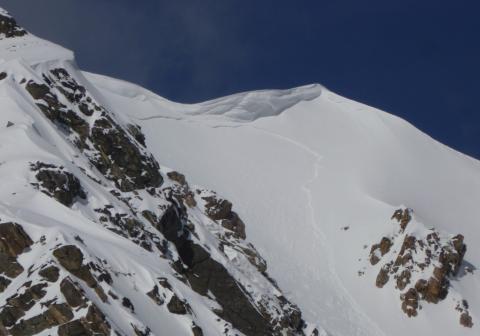
|
Northern Madison, 2013-03-30 4-6 inches of new snow above 9,000 ft combined with moderate northwest winds loaded upper elevation, leeward slopes. Fresh wind slab are resting over a firm ice crust on sun exposed slopes. This slide broke 4-6 inches deep, 50 feet wide and was triggered from the ridgeline. Althoug small in size, this slide could have carried a skier into unpleasant terrain. Photo GNFAC
|
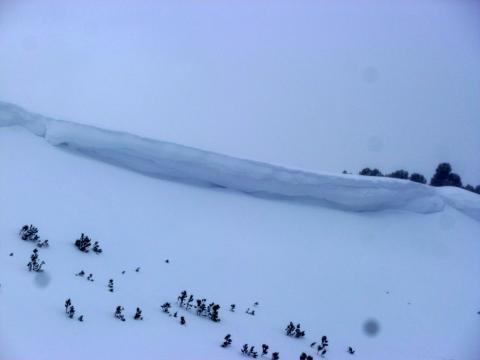
|
Northern Madison, 2013-03-21 Cornices present a few different problems. First - They can break back farther than you might expect. This problem needs to be considered when traveling along ridgelines. Second - slopes below cornices are often heavily wind loaded. Staying off of slopes below cornices is always a good idea. Photo GNFAC
|

|
Northern Madison, 2013-03-02 Skiers in Beehive Basin found a layer of buried surface hoar on an east aspect below the ridgeline. This layer consistenly propagated in stability tests and kept the group from skiing steep terrain. Photo Alex Merienthal |

|
Northern Madison, 2013-02-27 This avalanche was triggered with explosives by the Big Sky Ski Patrol. The snow structure at the crown was very similar to the snow Mark found on a slope in Beehive Basin (his snowpit). Mark's stability tests showed stability, but he did not believe it given the poor structure. Be on the lookout for false stable test results. Photo: BSSP |

|
Northern Madison, 2013-02-17 A layer of facets buried mid pack is the layer of concern. Although it's taking hard force to get this layer to fail, it continues to propagate in stability tests. This layer should be assessed before committing to avalanche terrain. Photo GNFAC |
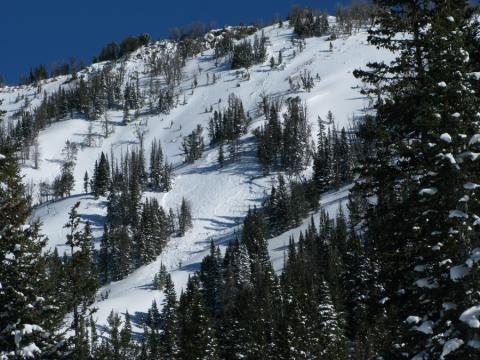
|
Northern Madison, 2013-02-04 These human triggered slides occurred on a west facing slope in Beehive Basin. Both slides were remotely triggered, indicating very unstable conditions. This area had a shallow and weak snowpack prior to last week's heavy snowfall. This poor structure is having trouble supproting the most recent load. Photo Clark Corey |
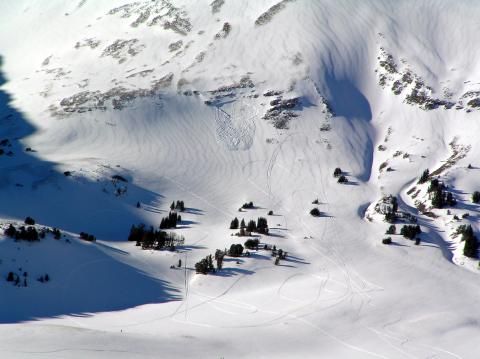
|
Northern Madison, 2013-02-02 This small slide occurred on Ceder Mountain in the northern Madison Range. More avalanches were observed in the surrounding area. Recent avalanche activity is the number one sign the snowpack is unstable. Photo Tom Leonard |
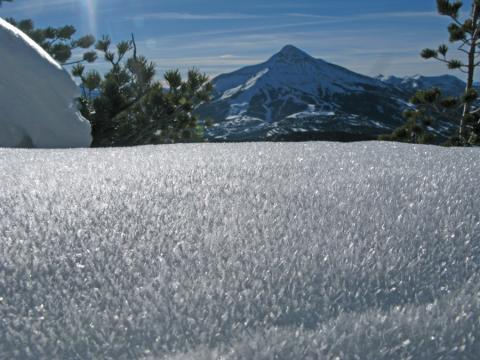
|
Northern Madison, 2013-01-06 On Saturday, a skier reported surface hoar in Beehive Basin. He wrote, "Very widespread, on all open slopes in the mid elevations, even into the upper elevations (we got up to about 9300ft) and forming on cornices. I measured up to 4mm, but some could have been larger. On very solar slopes (SW) it was warm enough to burn it off, but assume it exists everywhere else up there. There has been no wind." Photo: Clark Corey |
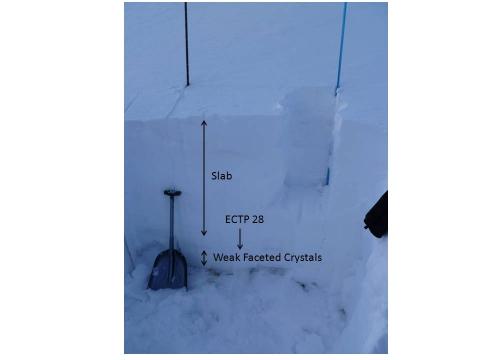
|
Northern Madison, 2012-12-03 This pit was dug on the flanks of a slide in the 2nd Yellowmule. Strong winds and recent snow heavily loaded north facing slopes. Weak snow near the ground is struggling to support the most recent load. Photo GNFAC |
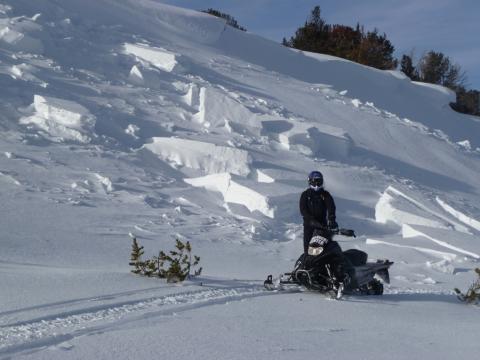
|
Northern Madison, 2012-12-03 The slide was triggered not far from the rider in this photo. It's at the entrance to the 2nd Yellowmule. This slope was heavily wind loaded during the most recent storm. Weak snow at the ground could not support the load. Photo GNFAC |
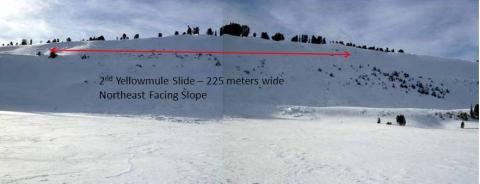
|
Northern Madison, 2012-12-03 This slide was remotely triggered and propagated over 200 meters wide. The slope is northeast facing around 9,000 ft. This event is a clear indication weak snow at the ground is struggeling to support the new load. Shady, upper elevation slopes are the most likely to hold weak snow. Photo GNFAC |
